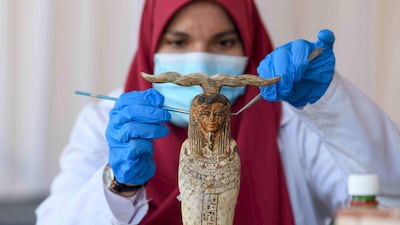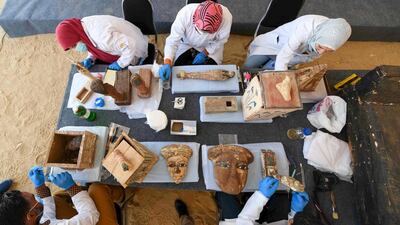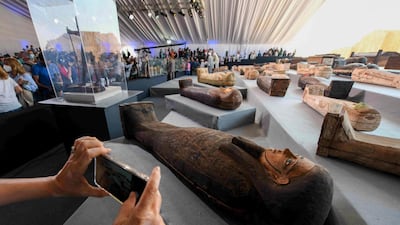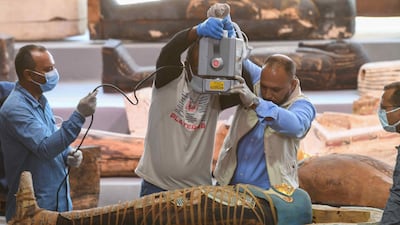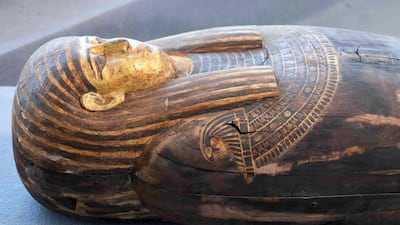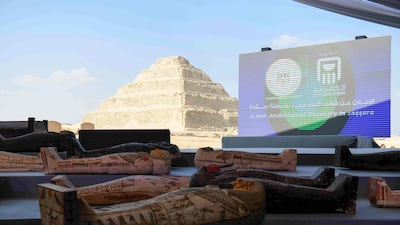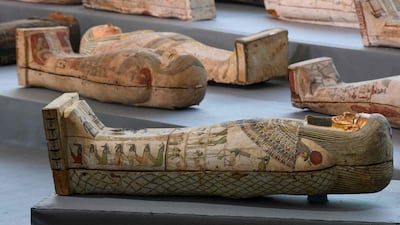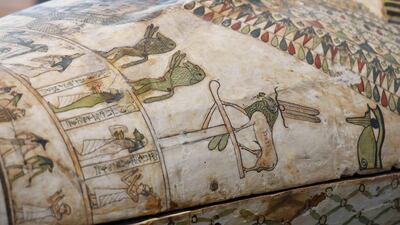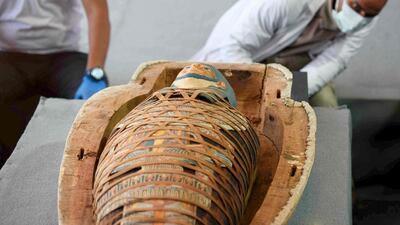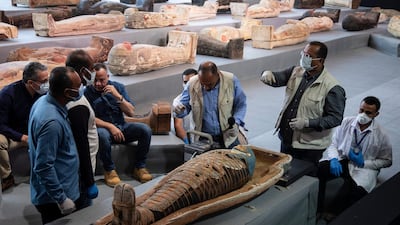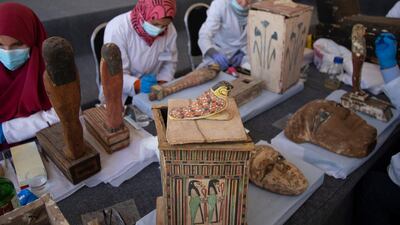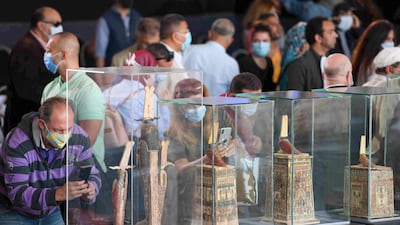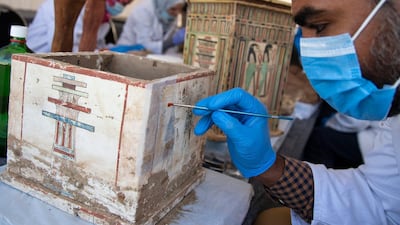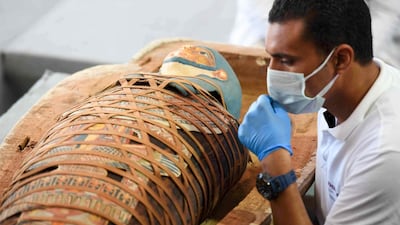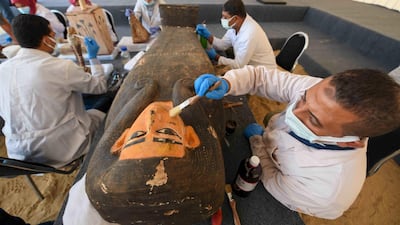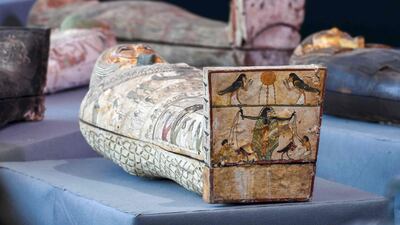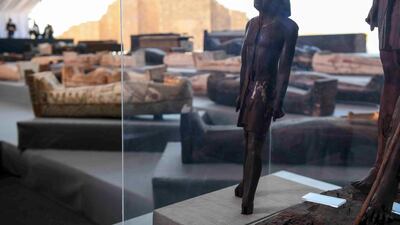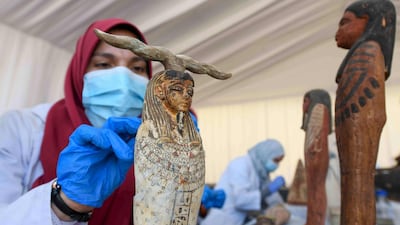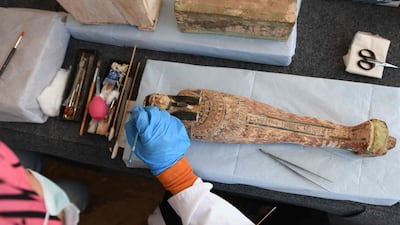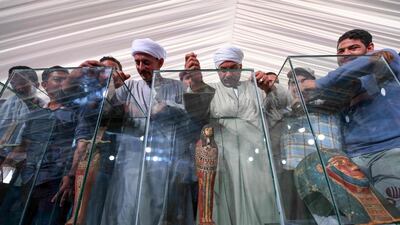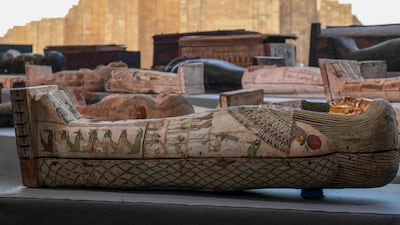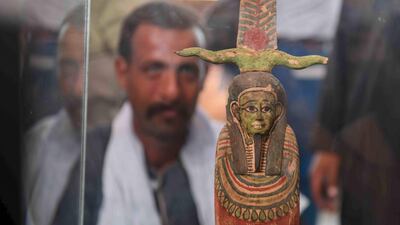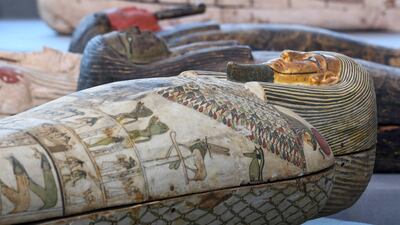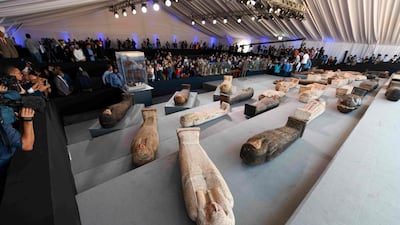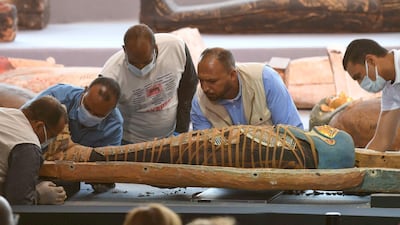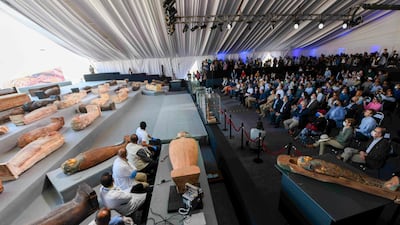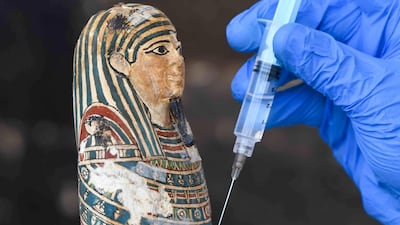The plainclothes policeman sprang off his chair to intercept the curious visitor approaching what has become perhaps the world’s most famous archaeological dig.
“You cannot be here, please leave,” the guard told the visitor in the sprawling pharaonic necropolis of Saqqara south of Cairo, Egypt’s capital. “There are security cameras everywhere. If you don’t leave now, I will be in trouble,” he said.
Behind him, workers ferried wheelbarrows laden with sand away from the site. Four other workers carried what appeared to be a sarcophagus wrapped in a thin sheet of sponge. Several men, possibly government archaeologists, sat on garden chairs at the edge of the dig watching the process shrouded in secrecy.
Saqqara, one of Egypt’s most popular historical sites, captivated the world in recent weeks with generous yields of ancient artefacts. Footage from the rare discovery showed Egyptian archaeologists proudly displaying the treasures unearthed, from sarcophagi in good condition – including some containing mummies – to gilded statues of ancient deities.
“Our problem now is that we don’t know how we can possibly wow the world after this,” said Tourism and Antiquities Minister Khaled El Anany, himself an archaeologist by training. “The world has come to expect us to continue to raise the bar,” he said recently in Saqqara.
There’s more to be found. “Saqqara is a treasure,” the minister said. “It has so far yielded only 1 per cent of what it contains. I expect that if we dig more in Saqqara, we’ll find human and animal burial places everywhere.”
The latest Saqqara discovery was announced on November 14, when archaeologists led by Mr El Anany announced that at least 100 more ancient coffins dating back to the "late pharaonic period" and Ptolemaic era along with 40 gilded statues were found 2,500 years after they were first buried. Barely five weeks earlier, they announced the discovery of 57 coffins in Saqqara.
Some of the latest finds were recently exhibited in a marquee, laid on tables with the nearly 5,000-year-old Step Pyramid of Djoser, Saqqara’s top attraction, towering majestically in the background. To maximise the find’s dramatic effect, the archaeologists opened one coffin containing a mummy and used an X‐ray to show how the body had been preserved.
“Luck has a lot to do with discovering antiquities. It is luck combined with God’s blessings,” said leading Egyptian archaeologist Mustafa Waziri, who is directing the Saqqara dig. “I cannot say this will be the last discovery to be announced this year,” he said cheerfully.
Mr Waziri said he was no longer looking for only more mummies and statues. “There is a workshop where the coffins were made that is yet to be discovered. We will, with God’s will, find it in 2021.”
The Saqqara site – part of the old Egyptian capital of Memphis – was used as a place of worship and burial ground for anyone, from ordinary people to kings and aristocrats. It was in use from the time of the early pharaonic dynasties about 5,000 years ago, right through to the Greco-Roman period from about 300BC and the later advent of Christianity.
"It's not surprising that so much is being discovered in Saqqara. It is a very rich site," Tarek Tawfik, an associate professor of archaeology at Cairo University and the former director of the Grand Egyptian Museum, which is currently under construction, told The National.
“What was recently discovered in Saqqara are multi-generational tombs, not a mass grave. It is not either a place where sarcophagi were hidden. It is a place that was being regularly used for burial.”

The inhabitants of the nearly 200 coffins found so far were not wealthy Egyptians, Mr Tawfik said. “They belonged to middle-class people who could not afford a large tomb like those built by the rich, but they did appear to have spent lavishly on mummification and the quality of the sarcophagi.
“Some of them had a coat of gold and many of those buried in them were priests. They are in such good condition that the amulets buried with them are still there,” he said.
Despite the rich finds, Egyptian officials know the foreign tourists normally drawn to Egypt by such discoveries are not packing their bags and flying here anytime soon due to Covid-19 restrictions.

Egypt’s lucrative tourism sector was badly hit by the turmoil that unsettled Egypt for years after the 2011 uprising that forced autocrat Hosni Mubarak to step down after 29 years in office. The sector began a slow but steady recovery from about 2015 to 2016, with the number of visitors reaching an all-time high in 2019 when 13 million tourists visited Egypt, which was labelled among the world’s top travel destinations last year.
Hopes were high for 2020, but the coronavirus pandemic and consequent limitations on air travel shut down the season soon after its winter peak in December and January.
Now, a few dozen tourists wander sites like Saqqara, the Giza Pyramids and the Khan Al Khalili bazaar, which normally draw hundreds, or thousands, of visitors a day.
But it is hoped that once the pandemic subsides, the sector, which employs an estimated one million people and normally accounts for more than 10 per cent of GDP will recover later this year.
Preparations are already under way for the next major tourist season, with construction nearing completion on the Grand Egyptian Museum, which promises to be among the capital’s main attractions when it opens its doors next year.
Some of the mummies discovered in Saqqara will be displayed in the new museum and three others, including the Egyptian museum in the heart of Cairo.
New museums across the country are being built, or have been partially opened, including the National Civilisation Museum in Cairo’s historical Fustat area, one in the new capital being built in the desert east of Cairo, and another in Minya, a province south of Cairo rich with historical sites.
The aim is to make as many of Egypt’s treasures as possible accessible to the public.
“No more storage houses,” said Mr Waziri, promising that all newly discovered antiquities will go to museums, where they are protected by specialist care.
